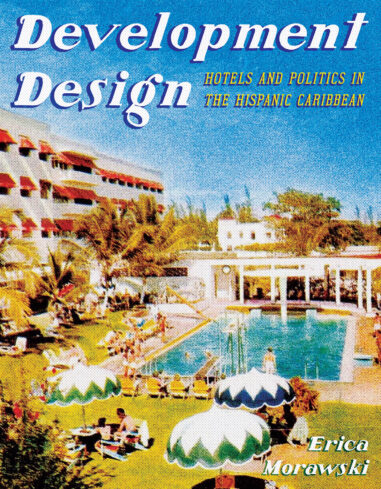
Hardcover $120.00
Also available in Paperback
Request Exam or Desk Copy. Request Review Copy
Development Design
Hotels and Politics in the Hispanic Caribbean
Richly illustrated and well written, Development Design contributes new insights by highlighting how hotels in the Hispanic Caribbean were not merely symbols of imperial imposition or touristic fantasy but were also instrumental in driving innovations in modern hotel design and projects of nationalism and geopolitics. Morawski’s work is a comprehensive and carefully studied investigation of Caribbean architecture in its historical context.

